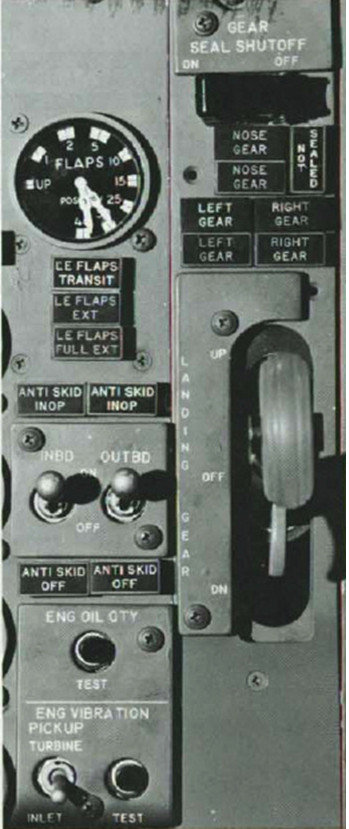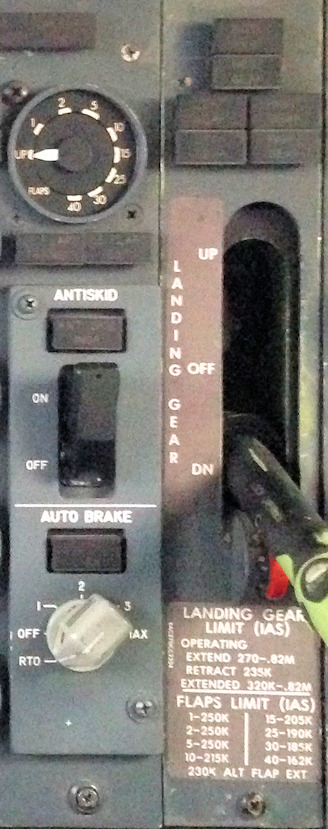 Centre Instrument Panel Differences
Centre Instrument Panel Differences
Home > Tech Photos > Flightdeck > Centre Inst Panel > Differences
Contents
These photos show side by side the centre instrument panel around the landing gear lever for the original 737-100 prototype, a 737 Classic and a 737 MAX. As you can see a lot has changed, several things have moved or disappeared and some are still exactly the same.
Working down the left-hand column first, the flap position indicators and LE FLAPS TRANSIT & LE FLAPS EXT captions are now all digital dial shown on the engine display. The LE FLAPS FULL EXT caption was dropped very early on in production and most 737-200s did not have this caption.
Anti skid was separated into inboard and outboard systems, this was combined into one for the 737-300 onwards. The on/off switches had guards fitted during certification after this photo was taken.
The engine oil quantity test button was standard on all round dial (non-EIS) 737s, including classics until approx. 1986. When you pushed it, it moved the oil quantity gauge pointers to zero.
The engine vibration could be monitored at 2 pick-up points, turbine or inlet, depending upon switch selection. Surprisingly engine vibration display was not available on all 737-200s. The pick-up selection switch (when fitted) was usually located up near the yaw damper.
Gear seal shutoff and the associated NOT SEALED caption was only fitted to the prototype. The aircraft had inflatable MLG wheel well seals which were inflated by bleed air when the gear was either up or down and deflated during transit. The NOT SEALED caption would illuminate during transit (normal), if it illuminated at any other time you could have a puncture and the seal could be depressurised with the GEAR SEAL SHUTOFF switch to save bleed requirements. These were discontinued as being too complicated and a similar drag and noise advantage was achieved with the present fixed rubber seals.
The landing gear lever itself was unchanged until the MAX, which is now a two-position handle (UP/DOWN). The center “OFF” position that removed hydraulic pressure from the actuators has been removed as the depressurization function is automated through a proximity switch system. Also, the lever is smaller requiring the lock override trigger to be moved to a button on the right.
All of the information, photographs & schematics from this website and much more is now available in a 374 page printed book or in electronic format.
*** Updated 05 Aug 2023 ***




